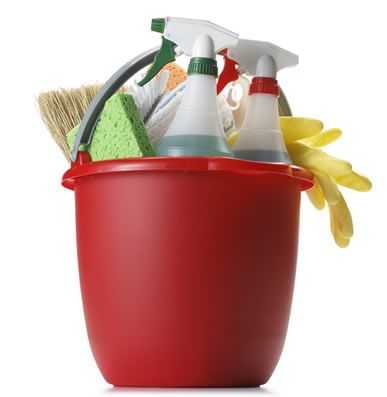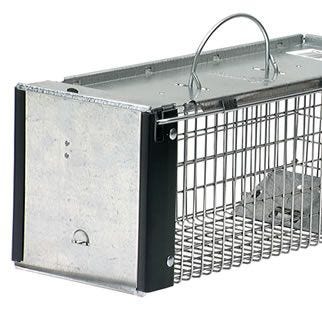





Rats
How to Get Rid of Rats Humanely
Rats can be extremely destructive, especially if action is not taken at the first signs of activity. The best way to get rid of rats and prevent damage is to adopt an integrated control regimen. Below Havahart® offers a step-by-step plan that will help you get rid of rats and keep them away from your home or business.
1 Eliminate Attractants

Rats are attracted to areas that offer accessible sources of food. These rodents will eat almost anything: crumbs on your floor, trash, food in your cabinet, pet food, etc. By maintaining a clean home, rats will be forced to find somewhere else to live.
- Sweep, mop, dust and sanitize surfaces regularly.
- Store all food and pet food in rodent-proof containers.
- Do not leave pet food out after feeding times.
- Wipe up and sanitize all areas where crumbs or liquids have spilled.
- Keep all indoor and outdoor garbage in secure, airtight containers.
- Clean up fallen berries, fruits and seeds that surround your home.

2 Understand Your Rat Problem
The more rats you have, the more effort it will take to get rid of them. Before taking any further steps to control rats, determine the magnitude of your infestation.
Although rats rarely make themselves visible, they do tend to leave behind signs of their presence, and these are the best indication of the amount of rats present. Signs of rat activity include:
- rat droppings
- grease marks along floorboards, walls, doors, windowsills, etc.
- tooth marks in wood or other structural materials
- large (2") holes in food or other packaging
- chewed insulation, pipes or electrical wiring
- rat tracks in dust or soil
3 Choose the Right Control Method
Use the information below to select the best control method for you. If you have a larger infestation, you may need to employ multiple solutions and put out several traps and repellents at once.
Live Rat Trap

Live rat traps are the best solution for physically removing rats one by one, indoors or out. They are easy to use:
- Select an extra-small or small trap, depending on the size of your rats.
- Position the trap along a wall near your damage or on your rat's travel path.
- Bait your trap with peanut butter or dried fruit.
- Set your trap and check on it frequently.
For step-by-step instructions, read How to Trap a Rat »
Shop Traps »Ultrasonic Rat Repellents

Ultrasonic rat repellents drive remaining rats out of indoor areas and keep them from returning. These devices create an uninhabitable environment for rats by emitting constant jackhammer-like sounds that only rodents can hear. These are also very easy to use:
- Plug the device into an unobstructed outlet in the room or area where you've identified damage.
- Relocate any rodent pets to rooms away from the repellents.
- After about a week, rats will begin to relocate. Replace your unit every 2-3 years.
For more information, read How to Repel Rats »
Shop Repellents »Expert Tips
- Understand the laws in your area before trapping and relocating a rat.
- Rats have a very high rate of reproduction, so a small rat problem can turn into a large infestation quickly. This is why it’s important to take control of rats at the very first signs of damage.
- Rat-proof materials like metal, steel wool or concrete are necessary for sealing holes in your home’s interior or exterior. Other building materials like wood, foam insulation, neoprene seals, plastic, rubber and vinyl are insufficient - as rats can easily chew through them.
- The best form of rat control is an integrated method that involves eliminating attractants, trapping and repelling. Utilizing multiple rat control solutions will result in the most effective defense.
